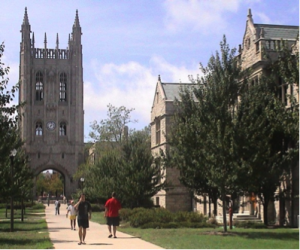Geography has been taught at the University of Missouri since the school's inception in 1843. In the early 1900s one of the founding members of the Association of American Geographers, Curtis Fletcher Marbut, was a central figure in Mizzou Geography. While the scope, techniques and emphasis of the discipline have changed dramatically over the years, the spirit of exploration and discovery that are central to geographical inquiry has remained strong here.
Geography today is an integrative discipline that helps us understand the world and the human place within it. When geographers say they are "reading the landscape," they are studying the most important document humankind has created - the transformed surface of the earth. A geographic education allows one to see and understand the earth's varied human and natural environments through a new lens, and to make wiser decisions about living in and using these environments.
The Geography Department at MU is small, yet its faculty is involved in a wide range of research. That means students are too. The program is structured to give students the skills they will need to work as professional geographers— or in numerous other fields. They are the basic skills of observation, speculation, analysis, interpretation, and communication. The size of the department ensures that faculty members know their students. Although some introductory courses tend to be large, all the remaining courses average 25 to 30 students. These moderate class sizes encourage questions and open discussions, in an atmosphere where teacher and student interact closely.
